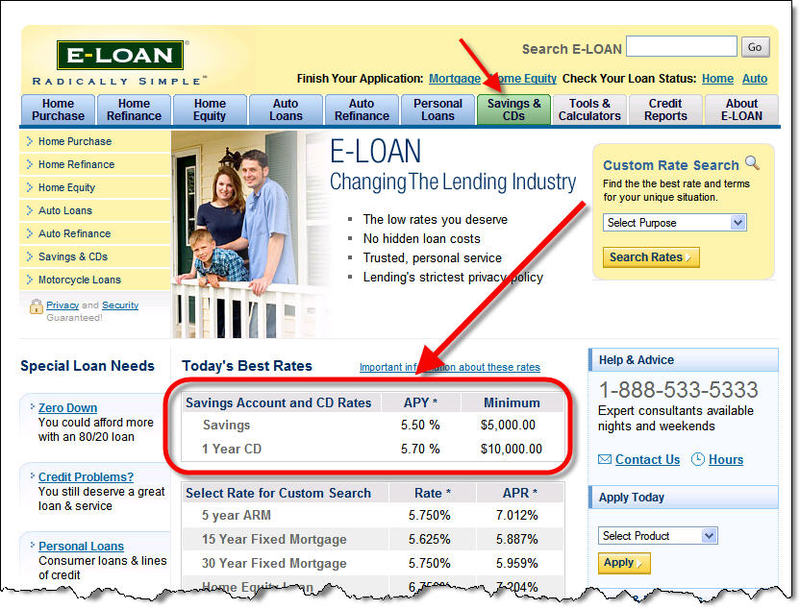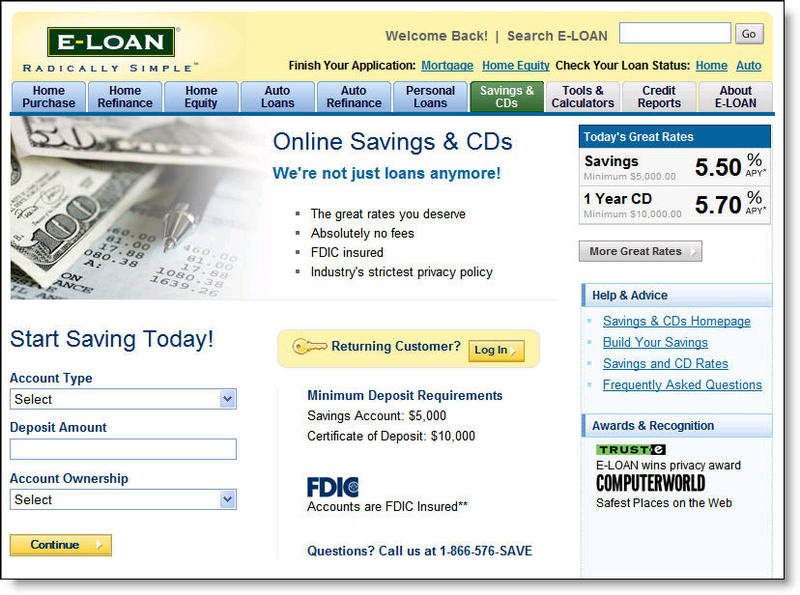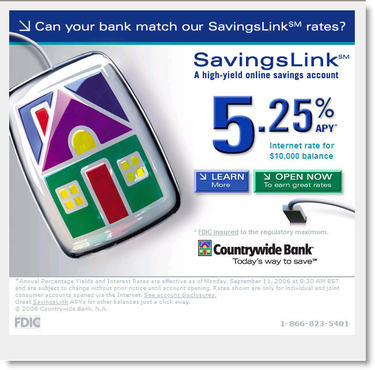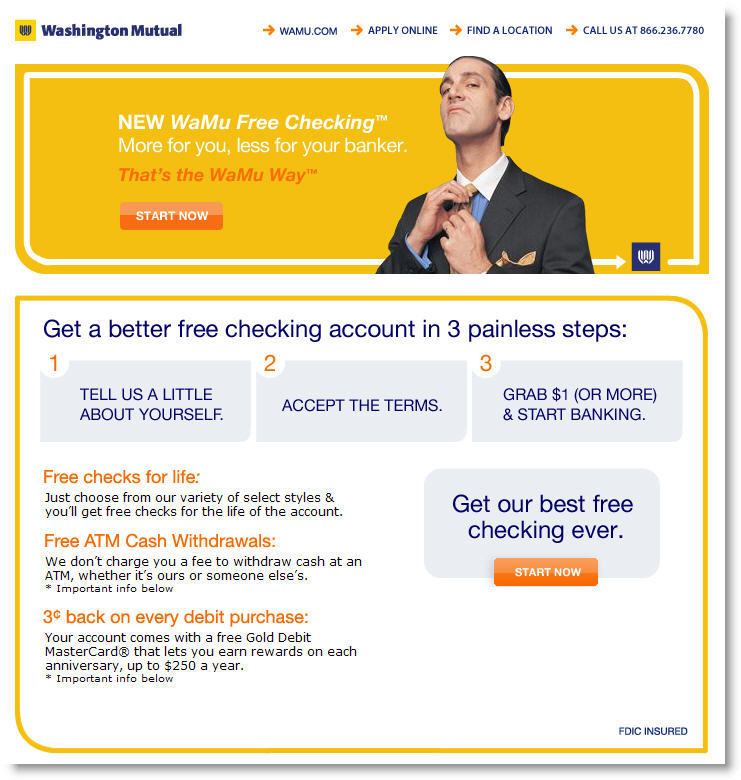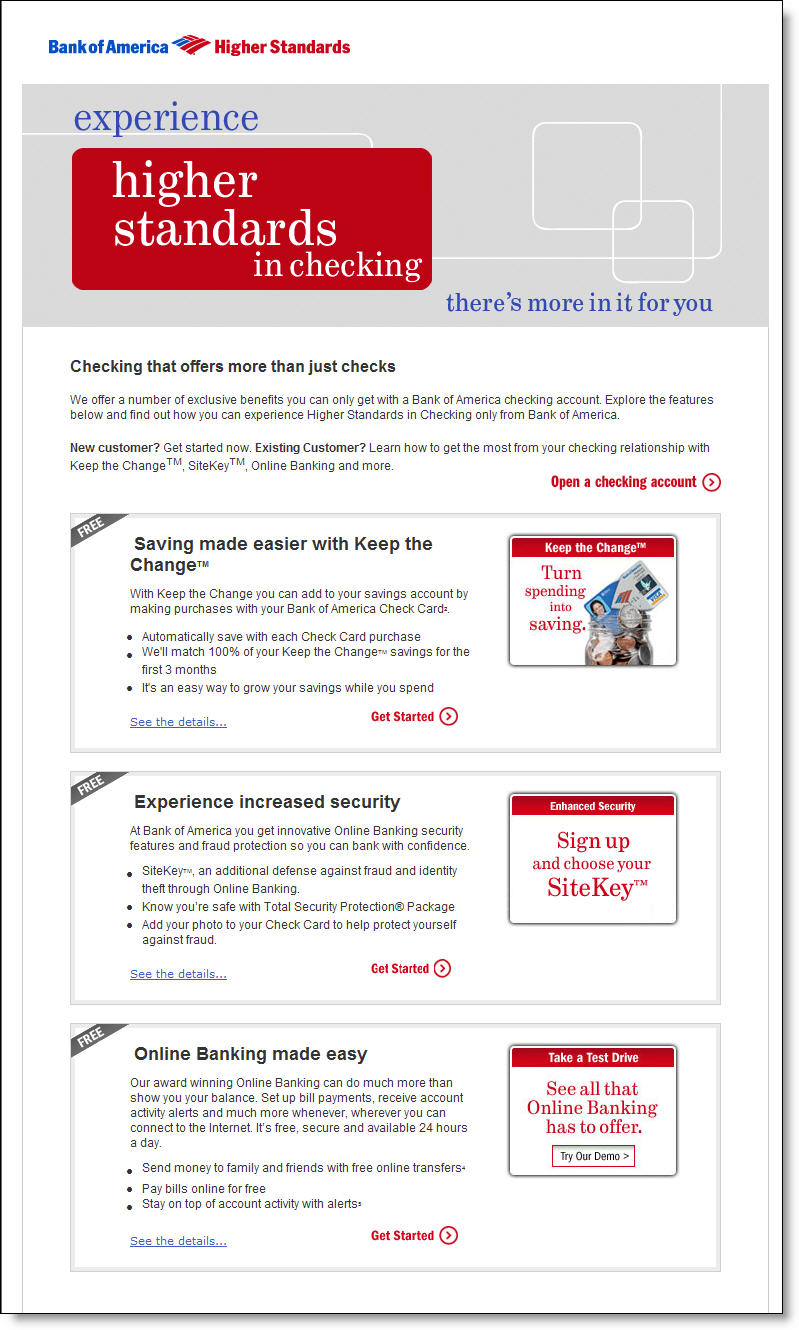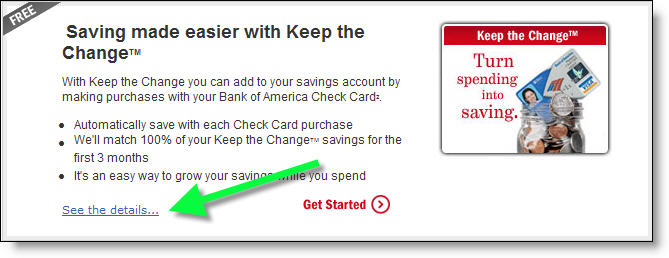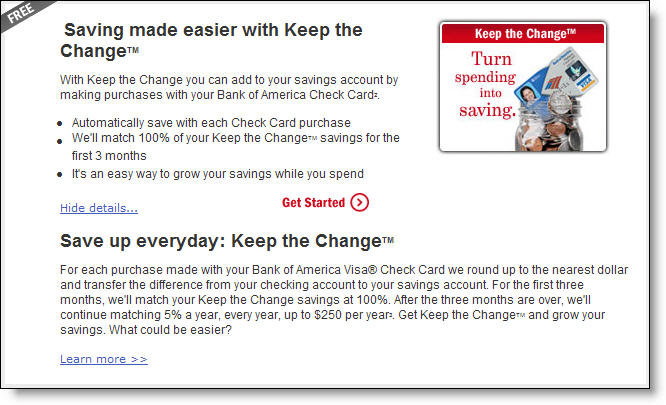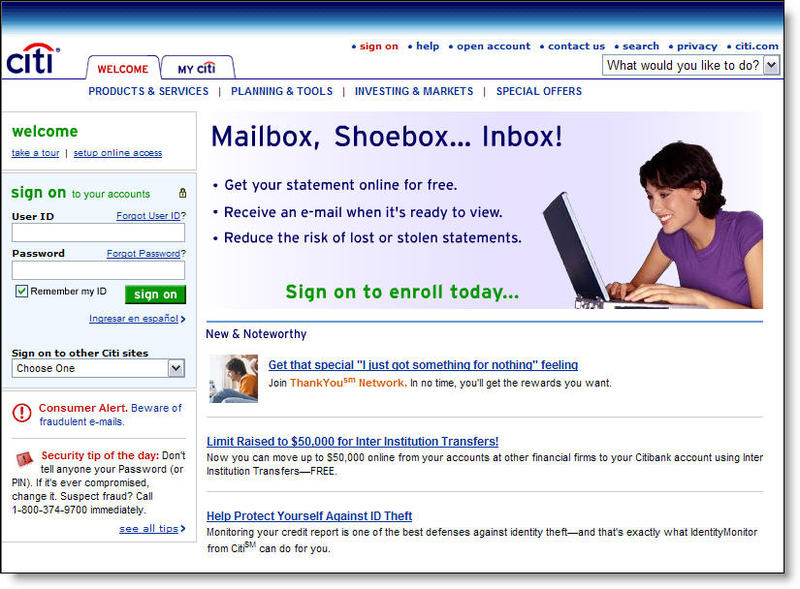If you thought it was tough competing with the direct banks and their 5% savings products, now you have a legitimate company advertising rates of 8% or more. Of course, this is no FDIC-insured product; it's the interest rate paid to lenders at Prosper's person-to-person loan marketplace.
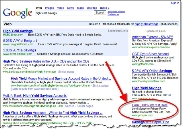 The person-to-person lender was bidding aggressively today at Google on both "high yield savings" and "online banking." The ads typically made the fourth position in the right-hand column, putting them "above the fold" (see inset).
The person-to-person lender was bidding aggressively today at Google on both "high yield savings" and "online banking." The ads typically made the fourth position in the right-hand column, putting them "above the fold" (see inset).
The company is testing three different ads, all focused on rate levels substantially higher than the 5% to 5.5% advertised by the competition. Prosper is testing a straight up "8%" ad, an "8% to 12%" ad, and an "8% to 29%" one (see below).
The ads lead to one of two landing pages. Here's the slick one that looks more "bankerish":
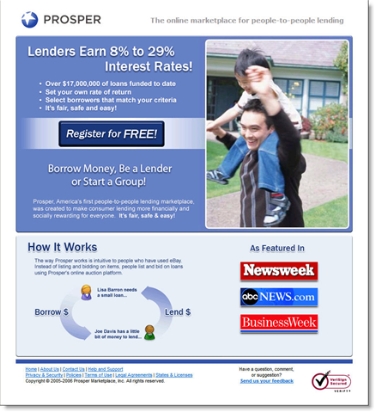
Or the more "Web 2.0" version that no one will confuse with a bank ad. There is even a small eBay logo visible in the screenshot (used by one of the participants seeking to bankroll an eBay store), a smart touch for a company that is positioning itself as "the eBay of lending."
All-in-all, it's a good effort put forth by Prosper, which can only succeed if it attracts enough money into the marketplace.
For more information on Prosper, Zopa, and the entire person-to-person market, see Online Banking Report #127.






